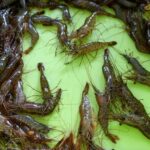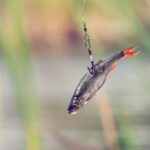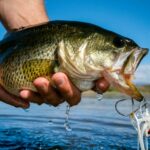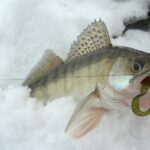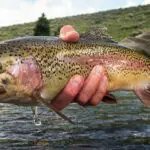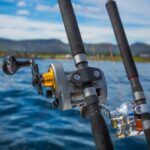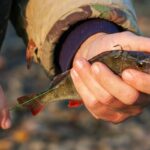Deep-sea bottom fishing is among the most exciting forms of fishing that any angler can participate in. However, deep-sea bottom fishing requires the right rig and bait to be successful. The fish targeted when deep-sea fishing are not to be underestimated and can be very difficult to catch. Every angler must know the right bait to use for this type of fishing to get anything on the hook.
The best bait for deep-sea bottom fishing is live baitfish from the same waters where the targeted fish dwell. Other bait items work well, including dead fish, cut bait, squid, shrimp and other crustaceans, lugworms, pilchards, eels, and even heavy jig lures.
Understanding the right bait to use for deep-sea bottom fishing is critical. Without the right bait, techniques and gear, deep-sea bottom fishing is impossible. If you have never been deep-sea bottom fishing, or if you want to get better at this skill, there are several bait options to try that will surely increase your success on the water.
The Best Bait For Bottom Fishing
Bottom fishing is always interesting, and deep-sea bottom fishing is always the most interesting and exhilarating version of this type of fishing.
Deep-sea bottom fishing provides the opportunity to land some of the biggest catches in the world and is an experience that anglers yearn for, even if they have never engaged in this type of fishing before.
Bottom fishing in the ocean is not the same as freshwater bottom fishing. The fish targeted with deep-sea bottom fishing are large, heavy, aggressive, and require specific baits and techniques to catch.
Grouper, sea bass, flounder, halibut, cod, triggerfish, amberjack, king mackerel, and other deep-dwelling oceanic fish are up for grabs when deep-sea bottom fishing. All of these fish can be incredibly challenging to catch.
With all this in mind, many anglers wonder what the best bait options are for deep-sea bottom fishing and which items yield the best fishing results.
Here we will identify and explore the best deep-sea fishing bait items, learn why they are so successful, and how to use them properly to land some of the best deep-dwelling fish in the sea.
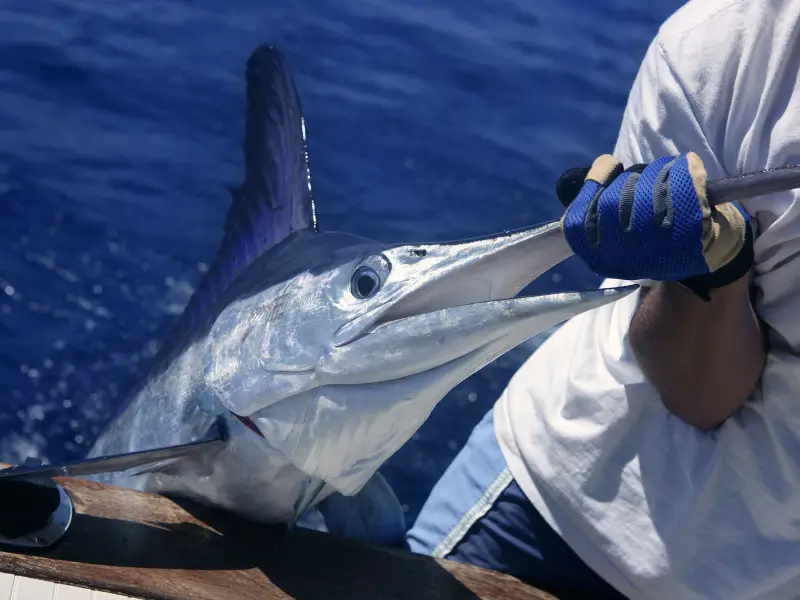
Baitfish
Most deep-sea anglers will agree that the best bait to use for deep-sea bottom fishing is baitfish.
Baitfish refers to any type of small fish easily caught and attached to hooks and fishing rigs. These fish vary in size and species, but they are very effective for catching large fish, especially in the ocean.
There are several species of baitfish everywhere in the world, and all large bottom-feeders know to look for these fish, as they are a common food source for these creatures.
There are multiple ways to use baitfish to successfully catch fish while bottom fishing, as these fish can be used in pieces, live, dead, or even frozen in some instances.
It is always best to use baitfish that is caught in the water that you are fishing in. If you use baitfish from other areas, the fish are less likely to bite because they are unfamiliar with the baitfish and may even be deterred by it.
However, if you take the time to catch some baitfish in the same water you are targeting big deep-dwelling fish, they are far more likely to take the bait.
You can catch bait fish by using cast nets or simply catching them on a dedicated rod and reel rig.
It is most effective to use baitfish while they are still alive, as this will not alert your target fish of foul play, and they will readily take the bait, thinking that it is a regular food item.
Baitfish are highly effective and very successful for deep-sea bottom fishing. Almost every angler that engages in this fishing prefers using this type of bait over others.
The only trouble with baitfish is that they can be difficult to keep, especially when using live bait, and they can be difficult to fish with regarding presentation and attaching them to your rig.
However, with some good practice, you will quickly get the hang of using baitfish and find your preferred methods. When you learn the best practices, you will have no problem catching large fish while bottom fishing in the sea.

Dead Fish
Dead fish are another common bait option for deep-sea bottom fishing that has proven to be very effective with certain species of fish.
Using dead fish as bait is less effective than using baitfish or live bait, but this bait item can be much less specific and still produce excellent catches.
Dead fish for bait is also very easy to get, as it is easily available from bait shops and supermarkets. Dead fish can be cut into pieces or put on the hook whole.
Dead fish can be used fresh or frozen. They can be almost any size and can be used as bait items for almost every species of carnivorous oceanic fish.
There are multiple types of dead fish bait options that work well when you use them correctly.
There are some problems with this bait item, however, as they are less effective than live bait, and dead fish tends to attract all manner of sea creatures, which means that smaller fish may take your hook or even eat the bait off your rig while it sinks to your target depth.
Despite the challenges of using dead fish as deep-sea bottom fishing bait, it can be very effective, and it is something that all anglers should try using.
Cut Bait
Cut bait is a relatively vague term when exploring deep-sea bottom fishing. Several advantages come with using cut bait, and it provides a very diverse and versatile bait option that can work very well for oceanic fishing methods.
Cut bait is any bait that is cut into pieces. Cut bait is typically made from baitfish, squid, octopus, dead fish, and meat such as chicken.
The bait items are cut into smaller pieces and attached to hooks and fishing rigs. Cut bait can be very effective and attracts a wide variety of fish when bottom fishing.
This type of bait is useful because it can be altered and customized based on the fish you are targeting. You can cut the bait into small pieces for smaller fish, or you can leave it large for big target fish.
You can combine multiple types of bait on the same rig, or you can use specific bait that is known to work for specific fish species.
Using cut bait allows the angler to tailor their bait for the fish they want to catch, to be ignored by fish that they do not want on the hook.
Even though cut bait can be difficult to use well, and it can be less effective than other forms of bait, it is among the most versatile bait items for deep-sea bottom fishing, and it is the go-to bait for many sea anglers.
Squid
Squid is a common bait item for deep-sea bottom fishing, especially when used in areas where squid naturally occurs.
If you are fishing in waters where seasonal squid come through, take the time to catch some of these squids and freeze them to use throughout the year for bottom fishing, or use them fresh when you catch them.
Squids tend to dwell on the seabed, especially near reefs, and so are a relatively common food items for the bottom-feeders that dwell here.
Squid should be used dead or as cut bait, this is where this bait item is most versatile, but they can also be used live with specialized rigs.
Squid is a favorite prey item for many large species of oceanic fish and is a bait item that is very likely to work well for most of the year.
Cut squid into smaller pieces as very effective cut bait, use it whole to catch the largest deep-dwellers, and use it as fresh as possible for the best results.
However, it is important to remember that dead squid is a favorite food item for almost every fish, so it will likely be snatched off your hook on the way down.
To prevent this issue, use a large piece of squid that cannot be entirely eaten on the way down, use a live squid, use a heavy sinker to sink the bait quickly, and set your bait in your hook very securely.
If you use squid well, it can be a very effective bait for deep-sea bottom fishing.
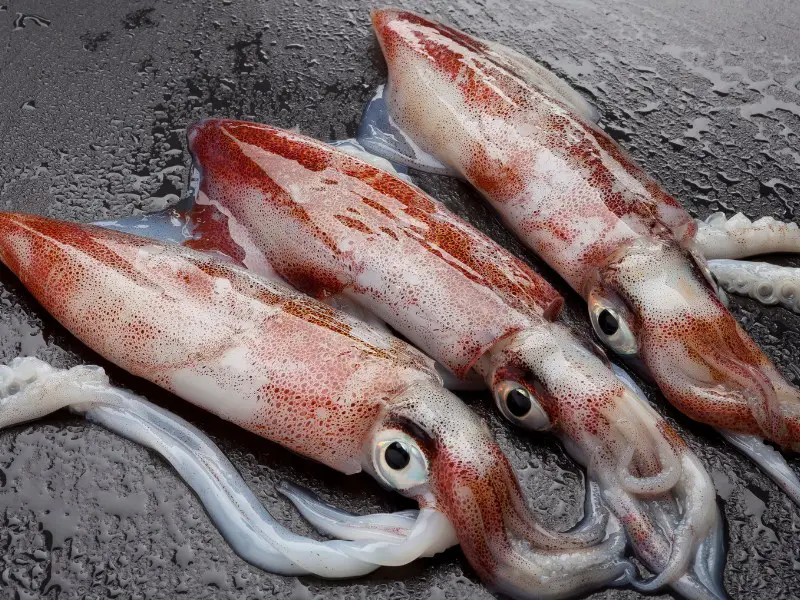
Pilchards
Pilchards are a lesser-known bottom fishing bait, but pilchards in every form are very good bait for this type of fishing.
The reason why pilchards work so well for deep-sea bottom fishing is that these are very oily fish that have a very intense scent. These attributes of the bait attract fish very quickly to the hook and are sought-after by larger fish.
Pilchards can work well if you catch them and use them for live bait, they can be used as dead or cut bait, and they can even be used from the can. Pilchards are also very cheap, easy to find, and easy to set into a fishing rig.
Every deep-sea bottom angler should try using pilchards on their rigs. Some excellent results can be had with this bait, and pilchards are attractive to a wide range of fish, which makes this bait highly effective.
Even small pilchards can be used to attract very large bottom feeders, as they are a very desirable food item, and they have a very attractive scent to large fish.
Shrimp
Shrimp is a classic deep-sea fishing bait and is very effective for oceanic bottom fishing.
The best bait items to use for the fish that can be caught with bottom fishing methods is a bait that the fish are accustomed to eating naturally in their same environment.
Shrimp are common almost everywhere in the world, and these critters often dwell at the seabed. This means that deep-dwelling fish and bottom feeders are accustomed to eating them, making shrimp an excellent bait item for deep-sea bottom fishing.
Shrimp are very effective bait for bottom fishing in the ocean, and they are eaten by all the species that this fishing method targets. Shrimp are among the most common bait items to use for this fishing method.
Another good case for using shrimp is that they can be used even frozen, and they are very easy to get. All bait shops have shrimp for sale, and they can be easily caught by anglers.
Dead, alive, frozen, or cut shrimp makes excellent bait for bottom fishing in the sea.
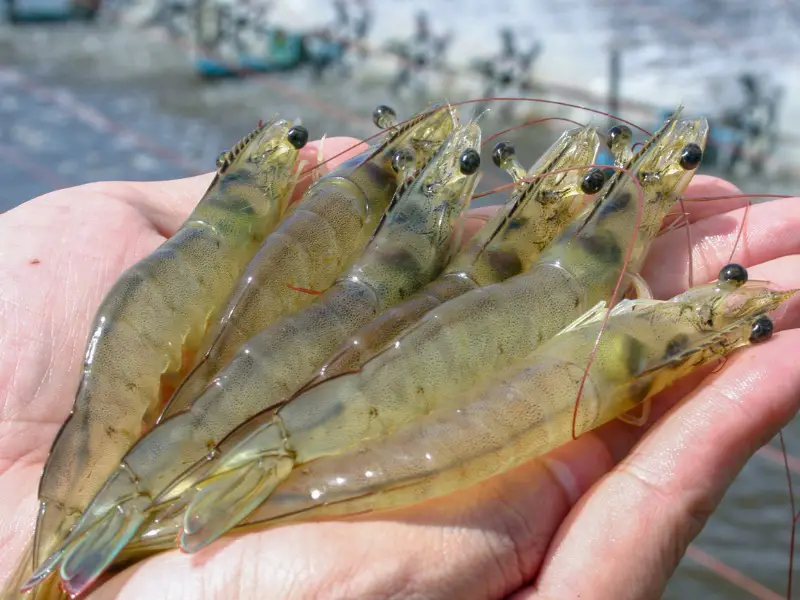
Crustaceans
We have established that shrimp are an excellent bait item for bottom fishing, but the reality is that all forms of crustaceans are ideal bait items for deep-sea bottom fishing.
Shrimp is the best option for this, which is why it has its own item on this list, but all forms of crustacean will work well for this bait.
Crabs, lobster, shrimp, prawn, and any other large crustacean species work very well for deep-sea bottom fishing bait.
It is always best to use pieces of large crustaceans for bait rather than using live bait items, but smaller examples, such as shrimp, some prawns, and some crabs, can be used live if you have the skills to do so.
All of these bait items are relatively common food items for large bottom feeders in the ocean. Still, it is important to use crustaceans that are naturally found in the waters that you are fishing, or the target fish are unlikely to take the bait.
Eels
Eels are another example of good bottom fishing bait because the fish that are targeted with this fishing method are likely to already be accustomed to eating eel, especially if you are fishing near offshore reefs.
There are hundreds of species of eel, so it is critical to use species that are native to the area or catch an eel in the waters that you are fishing.
Eel can be difficult to use, and most anglers prefer using eel as cut bait or dead bait, but the good thing about using it is that one eel can provide a lot of bait, and it is very effective when used well.
If you catch an eel in the local waters, cut it up for bait, cast it out, and you are sure to catch something with it. It is important to use some good techniques to successfully land fish with eel bait, but if you fish in the right area and with the right techniques, eel can be a highly effective bait item for bottom fishing.
Lugworms
Lugworms are excellent bait for oceanic fishing, as these worms are very commonly found in the seabed and commonly eaten by bottom-feeding fish.
All anglers can find lugworms easily, and they can even be collected on the beach after high tide, and they are very easy to attach to fishing rigs and use as bait.
Lugworms are a common marine worm species, and they grow to sizes that are more than viable to use as bait for large oceanic fish. Take the time to find some larger specimens for the best fishing results, but all lugworms can be effectively used as bait for bottom fishing in the ocean.
This bait is best used for targeting true bottom-feeding fish, such as halibut, flounder, and grouper. These fish are accustomed to searching the seabed for food and will likely eat lugworms when they find them.
It is also important to use the right rigs for using lugworms, such as slip rigs that sink to the bottom, as fish are more likely to take the hook when the worms are on the seabed.
If you use the right rig and target the right fish, lugworms are excellent bait for deep-sea bottom fishing.

Heavy Jig Lures
Jig lures are a good option for deep-sea bottom fishing, especially when you have no access to other forms of bait or when you have run out of bait to use.
Some anglers prefer using these lures over live bait and find jig lures far easier to work with and use successfully than any bait item.
Lures are technically not bait, but they can be used in the same way, and jig lures are the best option for bottom fishing.
Jig lures are versatile. They can be set up and used for all types of fish targeted with bottom fishing. These lures are very effective. They are easy to use, they are easy to get, they are cheap, and they can be customized to target any fish and overcome typical bottom fishing problems.
Conclusion
The best bait to use for deep-sea bottom fishing is live baitfish from the waters that you are fishing in. This bait will attract the best and biggest fish and is highly effective in almost every circumstance.
However, there are several bait options that work very well for bottom fishing in the sea, and anglers should be encouraged to experiment with as many bait options as possible until they find the right bait for their fishing style and the fish they are targeting.
- Do You Need An Indicator For Nymph Fishing? - November 16, 2023
- Fishing Safety Tips For Families - September 25, 2023
- What Is The Best Time To Night Fish At A Lake? - September 18, 2023

